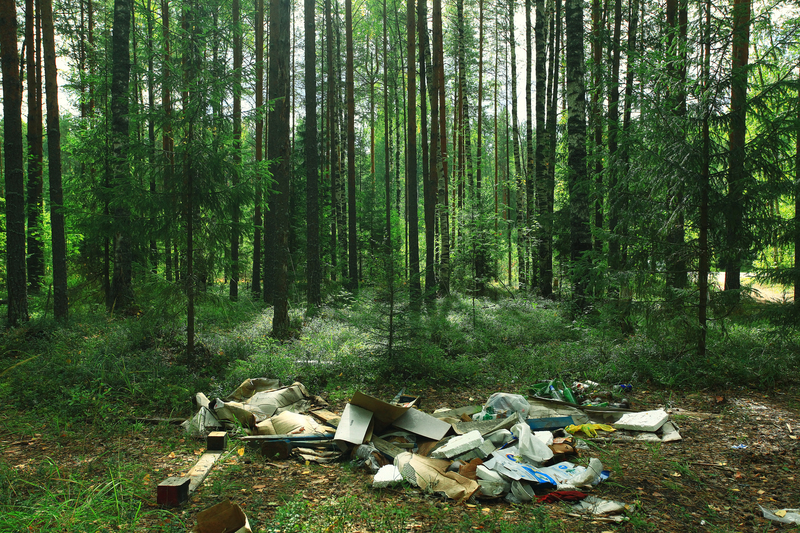How Different Eras Handled Waste Through History
In the modern world, waste management is a vital part of urban infrastructure and public health. But have you ever wondered how our ancestors dealt with trash, sewage, and other forms of waste? Over the course of human civilization, various eras have developed their own solutions to the ever-present problem of waste. In this comprehensive and engaging article, we'll trace the evolution of waste disposal from the earliest settlements to today's high-tech recycling systems, highlighting key innovations and lessons along the way.
1. Introduction: The Universal Challenge of Waste
Throughout history, the generation of waste has been an unavoidable consequence of human activity. From discarded food and broken tools to human and animal excrement, societies have continuously faced the challenge of containing, diverting, or repurposing waste to protect health and maintain cleanliness.
- Why study historical waste management? It reveals how different civilizations adapted to their environments, available resources, and cultural beliefs.
- Understanding waste through history can inspire innovations for sustainability and environmental protection today.

Prehistoric and Ancient Waste Disposal: Humble Beginnings
1.1 Prehistoric Practices - Leave No Trace?
Early humans were largely nomadic hunter-gatherers. Their limited possessions and mobility meant that waste simply biodegraded back into the environment. Animal bones, plant remains, and simple tools were left behind and often consumed by scavengers or weathered naturally.
- Evidence from archaeological sites such as Middens (ancient refuse heaps) provide insights into diet and daily life.
- Minimal environmental impact due to low population densities and organic materials.
1.2 Rise of Settlements and Early Sanitation
The Neolithic Revolution saw the development of agriculture and permanent settlements. As communities grew, so did the volume and complexity of waste. Archaeological evidence from places like Catalhoyuk and Skara Brae shows:
- Trash was commonly thrown into pits or midden heaps outside homes.
- In some cases, dwellings had their own waste disposal channels, albeit primitive.
- The lack of organized system could cause health hazards as refuse attracted pests.
Waste in the Ancient World: Innovations and Pitfalls
2.1 Sanitation in Mesopotamia and Egypt
Mesopotamians developed some of the earliest examples of wastewater management. Houses in important cities like Babylon and Nineveh had clay drains and piping systems that channeled wastewater into the streets or larger drains.
- Public sewage was often flushed away by rainfall or diverted into rivers.
- Solid trash was commonly thrown into street corners or city walls.
Ancient Egyptians, meanwhile, valued cleanliness as part of their culture. While the wealthy had indoor toilets and simple clay sewage pipes, the majority used public latrines or disposed of waste in fields, often for agricultural purposes.
- Waste reuse: Night soil (excrement) was sometimes spread on fields as fertilizer, an early form of recycling.
2.2 The Indus Valley Civilization: Early Urban Waste Systems
The Indus Valley Civilization (c. 2500-1700 BCE) introduced some of the world's most sophisticated early waste disposal systems. Cities like Mohenjo-daro and Harappa featured:
- Underground brick-lined drains running alongside streets.
- Individual homes with bathing platforms, connected to covered drains.
- Designated rubbish bins and periodic street cleaning.
Such advances contributed to urban health, showing a systematic approach to sanitation far ahead of their time.
2.3 Ancient Greece and Rome: The Rise of Public Sanitation
The Greeks and Romans pushed the frontier of waste disposal in history, especially for human waste:
- Public toilets with flowing water and underground sewers (e.g., the Cloaca Maxima in Rome).
- Street cleaning was a recognized profession; solid waste was collected and dumped outside city walls.
- Animal waste and market refuse were recycled as fertilizer or used in tanneries.
Still, ancient cities sometimes suffered from overflowing trash dumps and polluted water, leading to outbreaks of disease. Historical records attest that ineffective garbage management could be catastrophic for urban populations.
The Middle Ages: Decline and Adaptation
3.1 Waste Disposal in Medieval Europe
After the fall of Rome, many of the advances in waste management through history were lost or neglected. Most Medieval towns lacked formal sewer systems:
- Residents emptied chamber pots and nightsoil onto the streets, often with a shout of "gardyloo!"
- Pigs and stray animals roamed the city, consuming scraps and offal, but disease remained rampant.
- Street rubbish heaps and open cesspits led to foul smells and epidemic outbreaks, including the Black Death.
3.2 Attempts at Regulation and Waste Removal
Medieval city authorities attempted to control the worst excesses through by-laws:
- Creation of public latrines and cesspools, though maintenance was inconsistent.
- Penalties for dumping waste in water sources or near markets.
- Appointment of "muckrakers" or street cleaners, an early form of municipal waste collection jobs.
The Early Modern Era: Seeds of Sanitation Reform
4.1 Renaissance Innovations
In the Renaissance period, populations and cities expanded, exacerbating the need for effective waste disposal. Notable efforts included:
- Enclosed privies connected to cesspits - a small step away from public disposal.
- The continued use of human waste as fertilizer, known as "night soil," which was collected by professional "nightmen."
- Construction of rudimentary sewers in cities like Paris and London, though frequently blocked and unsanitary.
4.2 Collectors and Early Recycling
Rag-and-bone men and other informal waste collectors appeared:
- They gathered rags, glass, scraps of metal, and animal bones for resale or recycling.
- This tradition of repurposing waste materials continued for centuries, especially among poorer communities.
The Industrial Revolution: New Challenges, New Solutions
5.1 Urban Explosion and Public Health Crisis
The 19th century brought significant population growth and industrialization. Cities became overcrowded and waste volumes soared. Problems included:
- Cesspits overflowing into basements, polluting water supplies.
- Garbage and excrement piled up in streets, increasing outbreaks of cholera and typhoid.
- Air pollution from industrial and household trash burning.
5.2 Municipal Waste Management Is Born
Public health reformers recognized the need for systematic waste disposal solutions:
- Introduction of the first municipal garbage collection services in London (mid-19th century).
- "Dust-yards": centers where collected waste was sorted, with ashes and cinders sold for brick making.
- Construction of comprehensive sewer networks, based on Joseph Bazalgette's design in London and similar systems in Paris and other cities.
This era marks the emergence of waste management as a crucial urban function tied directly to public health.
20th Century to Present: Toward Sustainable Waste Management
6.1 Expansion and Diversification of Waste Streams
The 20th century saw an explosion in consumer culture, plastics, and disposable goods, resulting in ever-more complex waste challenges. Key developments:
- Landfilling became the dominant waste disposal technique in high-income nations.
- Incineration and waste-to-energy plants provided alternate methods of reducing volume and producing power.
- Recyclable materials (glass, metals, paper) began to be separated in the late 20th century amid growing environmental awareness.
6.2 Contemporary Waste Management Systems
Modern cities employ sophisticated waste management technologies:
- Source separation: Residents segregate recyclables, compostables, and waste at the curb.
- Recycling: Many countries mandate recycling of household and industrial waste.
- Composting of organic waste supports circular agriculture.
- Advanced landfill designs prevent pollution of soil and water.
New initiatives aim for zero waste cities and circular economy principles, where materials are continually reused. However, challenges remain, such as the growing tide of electronic and plastic waste.
6.3 Lessons from the Past: Rediscovering Old Wisdom
- Composting and reuse were common in the past; today, these methods are being revived.
- Informal recycling networks still play a crucial role in many developing countries, echoing the work of historical rag-pickers and nightsoil men.
- The integration of traditional knowledge and modern technology offers hope for sustainable waste solutions.

Conclusion: The Future of Waste Management
The journey of waste management through history is a testament to human adaptability and ingenuity. As we confront the mountains of trash generated by today's consumerist societies, there is much we can learn from the innovations and shortcomings of the past.
- Continuous improvement: From primitive midden heaps to advanced recycling plants, waste handling has always evolved with social, economic, and environmental pressures.
- Integrated systems are key: Cities that blend advanced technology, community engagement, and ancient wisdom manage waste more successfully.
- The ultimate challenge remains: moving from a linear "take-make-dispose" model to a truly sustainable, circular economy.
As you discard your next piece of trash or place an item in the recycling bin, remember: you are taking part in an ancient and ongoing human struggle--one that links us directly to our ancestors and shapes the future of our planet.
Frequently Asked Questions: Waste Management in History
- What was the first civilization to have sewers?
The Indus Valley Civilization (around 2500 BCE) built the first known citywide drainage and sewage systems. - How did people in the Middle Ages dispose of waste?
Most waste, including sewage, was thrown directly onto the streets or into cesspools. Some cities had basic by-laws and a few public latrines. - When did organized garbage collection begin?
The first municipal garbage collections in Europe appeared in the mid-1800s, in response to public health crises in rapidly-growing industrial cities. - What can we learn from historic waste practices?
Many past societies reused and recycled materials out of necessity--practices that have renewed relevance today as we seek more sustainable lifestyles.
Related Reading and Sources
- Encyclopedia Britannica: Waste Disposal
- National Geographic: The gross, fascinating history of human waste management
- BBC Future: How ancient people dealt with human waste
For more guides on waste disposal through history and historical waste management techniques, be sure to explore our other articles!